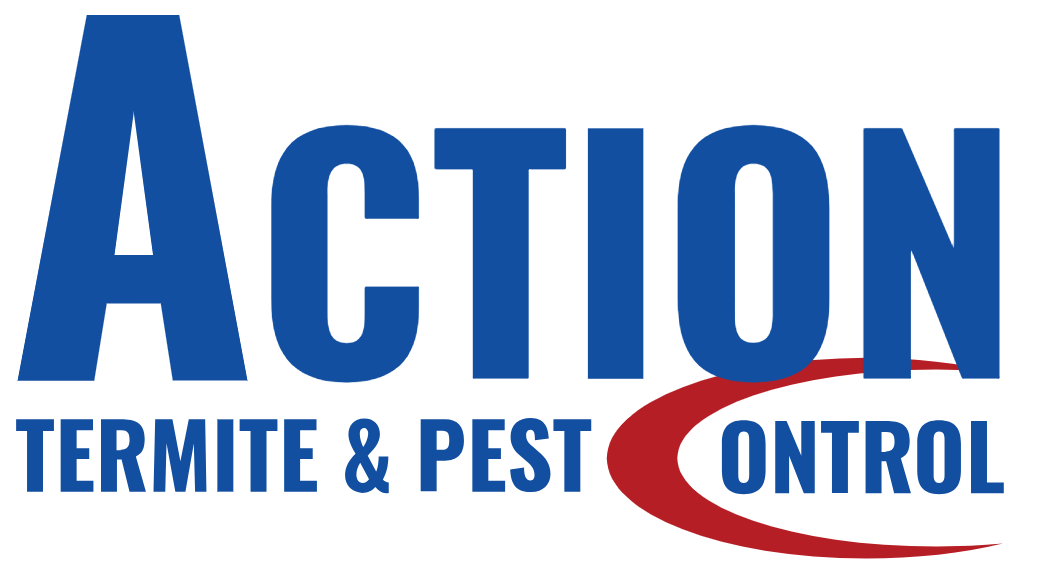Bed bugs are not only a common household pest but also a source of discomfort and distress. These tiny, reddish-brown insects can quickly infest your home and disrupt your peace of mind. The challenge lies in identifying their presence before the infestation spreads. So, how can you tell if you have bed bugs lurking in your home?
In this article, we will explore the three telltale signs that indicate a possible bed bug infestation. By understanding these signs, you can take the necessary steps to safeguard your home and prevent these unwelcome guests from multiplying.
Key Takeaways:
- Bed bugs are small, reddish-brown insects that feed on the blood of humans and animals.
- Early detection of bed bugs is crucial in preventing their spread and minimizing the impact of an infestation.
- The three signs you might have bed bugs include unexplained bites, blood stains on sheets or pillowcases, and the presence of bed bug excrement.
- It’s important to debunk myths and misconceptions about bed bugs to effectively combat an infestation.
- Seeking professional help or conducting a DIY inspection can help you address a bed bug infestation.
Understanding Bed Bugs: Your Invisible Roommates
Bed bugs are small, flat insects that are primarily active at night. They have a unique behavior that makes them elusive and difficult to detect. These pests can hide in various places such as mattresses, furniture, and even clothing, which allows them to go unnoticed for long periods.
One of the key aspects of understanding bed bugs is their lifecycle. Bed bugs go through several stages of development, starting as eggs, then progressing to nymphs before becoming adults. This lifecycle can take anywhere from a few weeks to several months, depending on environmental conditions and available food sources.
So, where do bed bugs come from? These unwanted guests can enter your home from various sources. They are known to hitch a ride on infested items such as luggage, clothing, or used furniture. In addition, bed bugs can be easily transferred from one location to another through public transportation, hotels, or even visiting friends and family.
To prevent a bed bug infestation, it is crucial to be aware of their habits and take preventative measures. Inspect your luggage and clothing after traveling. Additionally, be cautious when acquiring used furniture or items from unknown sources.
By understanding the behavior and lifecycle of bed bugs, you can be better equipped to identify and deal with an infestation. Early detection and intervention are essential in preventing the spread of these pesky insects in your home.
First Sign of Trouble: Unexplained Bites
One of the first signs of a bed bug infestation is unexplained bites on your body. Bed bug bites are often small, red, and itchy, and they may appear in a cluster or a line.
The bites can be mistaken for other insect bites or skin conditions, so it’s important to look for other signs of bed bugs to confirm an infestation. If you suspect bed bug bites, it’s recommended to consult a healthcare professional for proper diagnosis and treatment.
Identifying bed bug bites is crucial in determining the presence of a bed bug infestation. Here’s what bed bug bites look like:
- They are often small, red, and itchy.
- They may appear in a cluster or a line.
- They can be mistaken for other insect bites or skin conditions.
If you have unexplained bites that match these characteristics, it’s important to further investigate for other signs of bed bugs to confirm the infestation.
The Tell-Tale Marks: Blood Stains and Excrement
One of the key ways to identify a bed bug infestation is by examining the tell-tale marks they leave behind. Bed bugs can leave blood stains on your sheets or pillowcases, which are often a result of their bites. These stains can appear as small dots or larger smears and are an indication that bed bugs are present in your sleeping area.
In addition to blood stains, another indicator of a bed bug infestation is the presence of their excrement. Bed bug excrement typically looks like black dots or stains and can be found on bedding, furniture, or walls near their hiding spots. These dark spots are an accumulation of waste products from the bed bugs and can be a clear sign that they are infesting your home.
Identifying these signs of bed bug stains and excrement is crucial in confirming a bed bug infestation. When you notice blood stains on your beddings or come across black dots or stains in your sleeping area, it’s important to take immediate action to address the infestation and prevent their spread throughout your home.
What Are 3 Signs You Might Have Bed Bugs?
To recap, the three signs that you might have bed bugs are unexplained bites on your body, blood stains on your sheets or pillowcases, and the presence of bed bug excrement. It’s important to be aware of these signs and take prompt action if you suspect a bed bug infestation. Early detection and intervention can help minimize the spread and impact of these pests in your home.
Spotting the Evidence: Shed Skins and Tiny White Eggs
In addition to the bites, stains, and excrement mentioned earlier, there are other physical evidence that can indicate a bed bug infestation. One of these pieces of evidence is shed skins. As bed bugs grow, they shed their outer skin, leaving behind empty shell casings. These shed skins are often found near their hiding places, such as mattresses and furniture. Their presence can be a clear indication that bed bugs are present in your home.
Another telltale sign of a bed bug infestation is the presence of bed bug eggs. These eggs are tiny, white, and oval-shaped, resembling grains of rice or poppy seeds. They are about the size of a pinhead and are usually found in clusters in crevices and cracks where bed bugs hide. Locating these tiny white eggs can provide further confirmation that you are dealing with a bed bug infestation.
Spotting these shed skins and eggs is essential in identifying a bed bug infestation early on. Once you have identified these physical evidence, it is important to take swift action to address the infestation and prevent it from spreading further. Seeking professional help or using DIY methods can help you effectively eliminate bed bugs from your home and regain your peace of mind.
Bed Bug Myths Debunked: Separating Fact from Fiction
When it comes to bed bugs, there are many myths and misconceptions that can lead to unnecessary panic and ineffective strategies for dealing with an infestation. It’s important to separate fact from fiction in order to effectively combat these pests.
One common myth is that bed bugs are only found in dirty homes. The truth is that bed bugs can infest any type of environment, regardless of cleanliness. They are excellent hitchhikers and can easily be brought into a home through luggage, clothing, or used furniture.
Another myth is that bed bugs only bite at night. While it’s true that bed bugs are primarily active during the nighttime hours, they can and will bite at any time if they are hungry. Bed bugs are opportunistic feeders and will seek a blood meal whenever they have the opportunity.
Dispelling these myths and understanding the facts about bed bugs is crucial in effectively addressing an infestation. By knowing that bed bugs can infest any environment and feed at any time, you can take appropriate measures to prevent their spread and protect yourself and your home.
Now that you have a clearer understanding of the facts about bed bugs, you can confidently take steps to deal with a potential infestation. Remember, early detection and intervention are key to preventing the spread of bed bugs and minimizing their impact on your home and wellbeing.
Professional Intervention and DIY Inspection Tips
If you suspect a bed bug infestation, there are steps you can take for professional intervention or DIY inspection. Professional pest control services can effectively eliminate bed bugs through various methods, such as heat treatments or chemical treatments.
DIY inspection tips include carefully inspecting mattresses, furniture, and other possible hiding spots for signs of bed bugs. Thorough cleaning and reducing clutter can also help in preventing and managing bed bug infestations.
When considering professional intervention, it is important to consult with experienced pest controllers who specialize in bed bug treatment. Their expertise and knowledge can ensure a thorough inspection and effective eradication of bed bugs in your home.
For a DIY inspection, start by closely examining your mattress and bedding for any signs of bed bugs, such as live bugs, shed skins, or small blood stains. Bed bugs often hide in the seams, folds, and crevices of mattresses and bedding.
Inspect other areas near your bed, including bed frames, headboards, and nightstands. Look for any signs of bed bug activity, such as dark brown or black spots on walls and furniture, which could be bed bug excrement.
Remember to check upholstered furniture, curtains, and carpeting, as bed bugs can hide in these areas as well. Pay special attention to cracks, crevices, and seams where bed bugs may seek refuge.
If you do discover signs of bed bugs during the inspection, it is important to take immediate action to prevent the infestation from spreading. Consider isolating your bedding by placing a protective cover on your mattress and using bed bug-proof encasements for your pillows.
Additionally, launder all infested bedding and clothing in hot water, followed by high heat drying. Vacuuming can also help to remove bed bugs and their eggs, but be sure to dispose of the vacuum bag or empty the canister in a sealed trash bag to prevent re-infestation.
However, keep in mind that DIY inspection and treatment methods may not always be sufficient for large or severe infestations. In such cases, it is recommended to seek professional assistance to ensure thorough eradication.
By combining professional expertise and DIY inspection, you can effectively identify and address bed bug infestations, ensuring a safe and pest-free environment in your home.
Conclusion
Bed bug infestations can be a nuisance, but early detection and intervention are key to preventing their spread. By being aware of the signs of a bed bug infestation, such as unexplained bites, blood stains, excrement, shed skins, and eggs, you can take prompt action and seek professional help if needed. Remember to dispel myths and misconceptions about bed bugs and follow proper inspection and prevention methods to safeguard your home against these pesky pests.
Recognizing the unexplained bites on your body is often the first sign of trouble. These small, red, and itchy bites can easily be mistaken for other insect bites or skin conditions. Consulting a healthcare professional for proper diagnosis and treatment is recommended if you suspect bed bug bites.
Furthermore, the presence of blood stains on your sheets or pillowcases is an indicative sign of bed bug bites. These stains, which may appear as small dots or larger smears, occur when bed bugs are crushed after feeding. Similarly, the sight of bed bug excrement, which resembles black dots or stains, can confirm an infestation. Be vigilant in checking bedding, furniture, and walls for these tell-tale marks.
Additionally, it is crucial to keep an eye out for other physical evidence such as shed skins and tiny white eggs. Bed bugs shed their skins as they grow, leaving behind empty shell casings that can be found near their hiding places. Meanwhile, the presence of clusters of small, white, oval-shaped eggs the size of a pinhead is a strong indication of a bed bug infestation.

 BED BUGS
BED BUGS SCORPIONS
SCORPIONS RODENTS
RODENTS BEES
BEES MOSQUITOS
MOSQUITOS TAP INSULATION
TAP INSULATION PEST PROTECTION PLAN
PEST PROTECTION PLAN


